Don’t miss out!
Get the latest resources sent directly to your inbox.
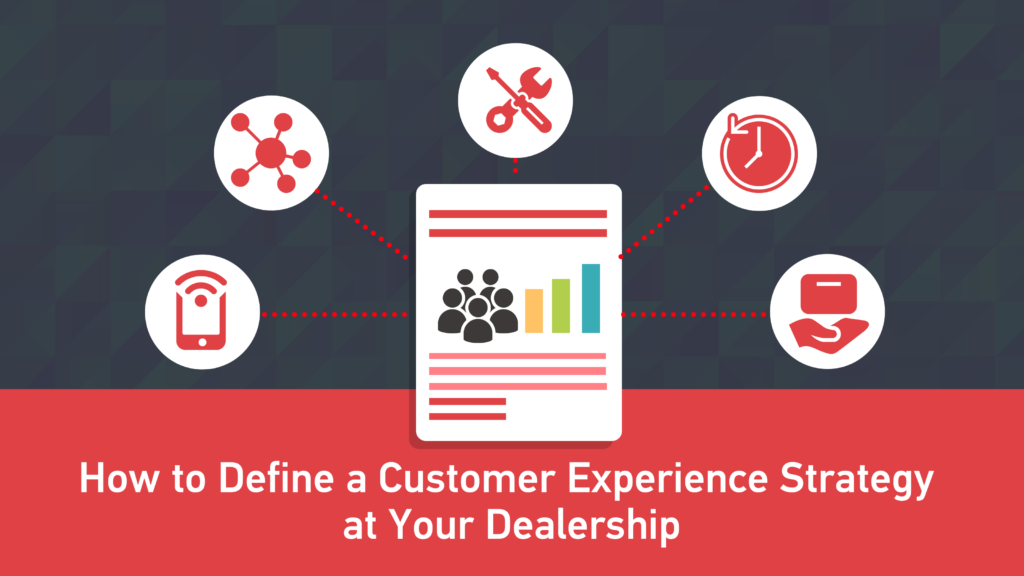
Like any other part of business growth, creating a consistently good customer experience at your dealership requires that you have a strategy.
But before diving into the steps for defining a customer experience strategy, we need to debunk a couple of common customer experience myths.
Busting Customer Experience Myths
1. Pick an approach for identifying customer experience gaps
2. Identify customer experience gaps at your dealership
3. Gather data to understand your dealership’s customer experience gaps
4. Pick which customer experience gaps you will focus on fixing
5. Measure your dealership’s customer experience
The truth is that exceeding expectations can create moments of delight. But it isn’t sustainable to expect your team to be able to exceed customer expectations every time.
Simply meeting customer expectations consistently can have a significant and positive influence on customer loyalty.
In fact, customers are 4x more likely to lose their loyalty after a negative service interaction. Generally, a service interaction is negative if a customer needs to put in additional effort to get the outcome they want.
Some key drivers of customer disloyalty are:
When we talk about customer experience vs. customer service, what do we mean?
“Customer service” we are generally referring to classic tactics like smiling when speaking to customers, or believing the customer is always right. Those things matter but they don’t address the root causes of customer disloyalty.
Here’s an easy way to look at it:
Customer service refers to reactive response when customers initiate contact with the company related to their needs.
Customer experience is a proactive approach to finding the “gaps” in delivering the best service to customers. Focusing on customer experience helps build long-term relationships by anticipating their wants and needs, aiming to improve the customer journey without being prompted.
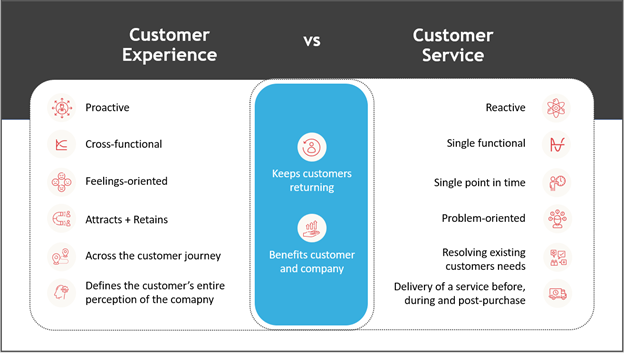
There are several key characteristics of a positive customer experience:
So, you want to improve the customer experience at your dealership. To do this, you will have to identify “gaps” in your dealership that are preventing your team from delivering the best service to customers that you can. Then, you will have to decide which gaps you want to focus your attention on fixing (spoiler: you won’t be able to fix them all at once).
The process for coming up with a customer experience strategy can be broken down into 4 steps:
One of the best approaches to take for improving customer experience is to focus on waste reduction. The famous Toyota Production System management philosophy identifies eight common types of waste (known as the “eight wastes of lean”) that prevent you from running a lean, optimized business:
These types of waste can all create “gaps” in your customer experience.
Once you’ve picked your approach, you can get to work on identifying the gaps in your dealership’s customer experience.
Here are some questions that will help your management team reflect on the current experience at your dealership:
Going through this exercise requires honest self-reflection. It might be painful. But the more honest your team can be, the better you will be able to address the gaps in your customer experience.
Odds are that through this reflection, you will identify at least one of the eight types of waste happening at your dealership.
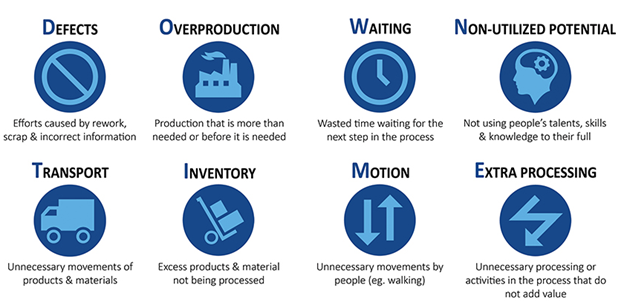
At the average dealership, Waiting and Motion are common types of waste.
Once you know what you’re looking for, you can collect data to understand the waste happening at your dealership.
An effective method for gathering data is Value Stream Mapping.
Value Stream Mapping is a lean-management method for analyzing the current state and designing a future state for the series of events that take a product or service from the beginning of the specific process until the end.
Value Stream Mapping makes it easier to identify gaps that can have a negative impact on your business’s customer experience.
There are a lot of tools out there that you can use for value stream mapping. But sometimes, the best tool is the most cutting-edge and high-tech: sticky notes.
Below is an example of a value stream mapping that I did internally at IDS. The colors of the sticky notes represent different departments. The idea of value stream mapping is that you map out an entire process end-to-end with your team and through the process. In doing so, you’ll find opportunities to “lean out” and/or “reduce steps”.
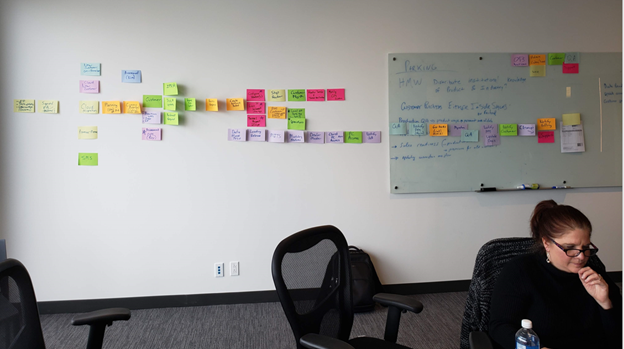
The best results are often achieved when the mapping sessions are led by the employees who work with the processes every day. This requires managers to take a step back from leading the discussion and to set aside their biases.
If you try and solve everything at once, you’re setting yourself up to fail. So, look for the areas you want to focus on first.
Some of the biggest and most common customer experience gaps are Expectation Gaps and Communication Gaps. Let’s look at some ways you can fix those.
A challenge many dealers face is customers getting upset that no one is updating them on the status of their unit when it’s in the shop.
To consistently meet customer expectations, I recommend setting up Service Level Agreements with your service department. Service Level Agreements ensure that your service department knows what you expect from them, and they know what success looks like.
SLA’s have two levels:
My suggestion is to set up an SLA so that all customers are updated every X days, regardless of if there is a status update on their Work Order or not. Sometimes even an update like, “We are still waiting for the part but just wanted to send you a quick note that we are on it” is better than no update.
Some examples of ways you can meet customer expectations:
Read Next: 6 Important Skills Service Writers Need to be Successful
If the customer needs to ask for an update, you took too long. But calling up customers or writing out an email takes time. When your team is busy moving around and getting jobs done, it can be easy for communication to fall to the wayside. But lack of communication breeds customer dissatisfaction.
Automate text message updates
This is where automation can have a big impact on the frequency of your team’s communication with customers. Especially automated text messages.
Why texting works:
The greatest advantage of SMS is that it’s read within minutes of receipt, giving it a 209% higher response rate than phone calls and email. Some dealers report that sometimes it takes hours, if not days to hear back from emails and calls but get almost immediate responses from texting. This is crucial when waiting to get authorization for work and service advisor productivity.
An email response or call later in the day results in your service team needing to stop what they’re doing, re-familiarise themselves with that Work Order, and respond. Then they need to re-familiarise themselves with what they were doing before they got interrupted—it’s an endless cycle.
Engagement levels are much higher than email as it takes only takes a few seconds to respond. Not only that, but texting feels more personal than an email.
Digitize service processes
One of the most common types of waste found in dealerships is Motion. Look at the path many dealership employees walk:
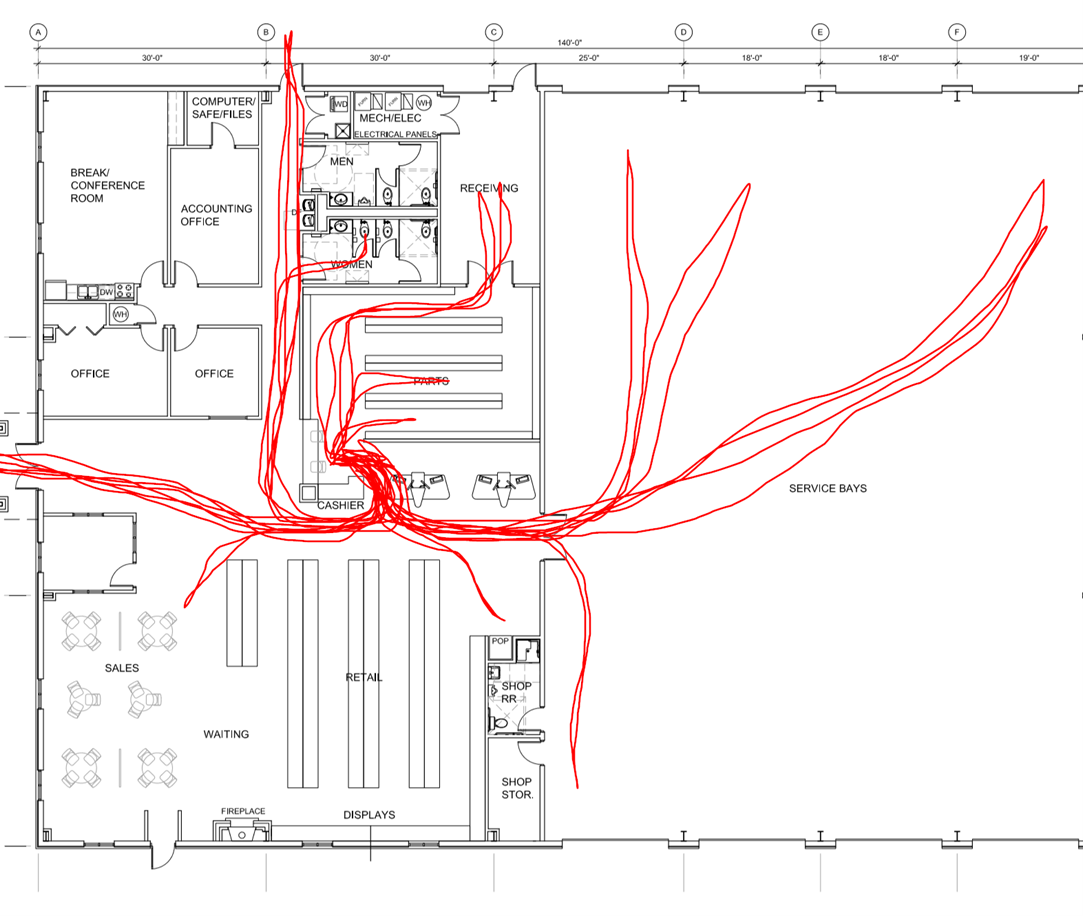
That’s a lot of back and forth. But you can cut down on unnecessary motion by digitizing parts of your dealership’s service processes. Some examples of areas that can be digitized are:
We’ve developed a suite of service efficiency tools that allow you to do all of this called Service360. You can find out more about Service360 here.
To know if your customer experience strategy is working, you need to measure your dealership’s performance. One of the best ways to do this is to set benchmarks and measure your progress against them.
Do you know how your dealership’s Repair Event Cycle Time (RECT) compares to other dealers in your area? RECT is the amount of time that passes between a Work Order start date and completion date at your shop.
Between those dates are some other key dates, including when parts are ordered, when parts are received, first labor date, and last labor date. Those dates are often held up by bottlenecks like parts availability and warranty coverage.
This is valuable information to have. If another dealer in your area has a shorter RECT, there’s a good chance that customers are going to start going to them instead.
Below is an example of one of our RECT reports. You can view a summary of your last month’s business, including the RECT for different types of Work Orders, compared to regional and national averages. The report also shows the impact of service bottlenecks on your customers. At the bottom, you can see historical data to track your progress.
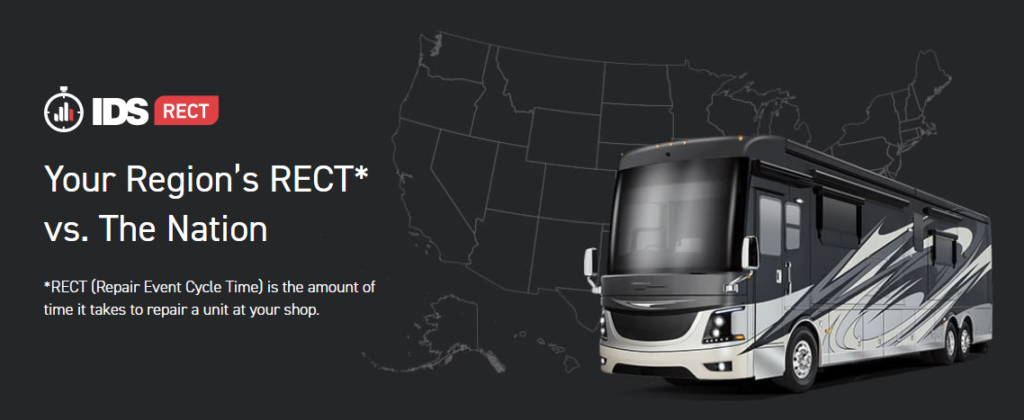
You can learn more about our free RECT reports here.
Another one of the best ways to benchmark your customer experience is to use Net Promoter Score. You’re probably already familiar with this system so I won’t go into too much detail (Qualtrics has a guide if you want to read more).
Gathering your dealership’s NPS score will help you gauge whether your customer experience is generally good, okay, or great.
It’s also important to not just look at responses from happy customers but to also dig into the responses from negative customers. Why didn’t the experience meet their expectations? You’re likely to uncover customer experience gaps this way.
The key to tracking your dealership’s NPS is consistency. Automated text messages or emails help here too. After you close a sale with a customer at your dealership, send them a text message asking them to rate their experience.
We’ve covered a lot of information here. So, at a high level, keep these guidelines in mind when defining your customer experience strategy:
Want to learn more about how you can improve communication at your dealership to create a better customer experience? We’ve got a guide that shows you how to improve communication with customers at every stage of the buyer’s journey.
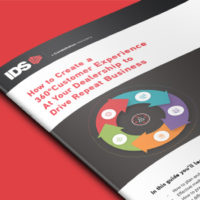

Frank Tamburrini is General Manager at IDS. He has over 12 years of experience leading service and support organizations that spanned across North America and overseas, servicing both small businesses and some of Canada’s largest organizations. Not only that, but he also has 14+ years of experience helping retailers maximize their investment in software solutions and has been part of thousands of client implementations. Frank believes that using a data-first business strategy is the key to continually meeting customer needs.
Get the latest resources sent directly to your inbox.